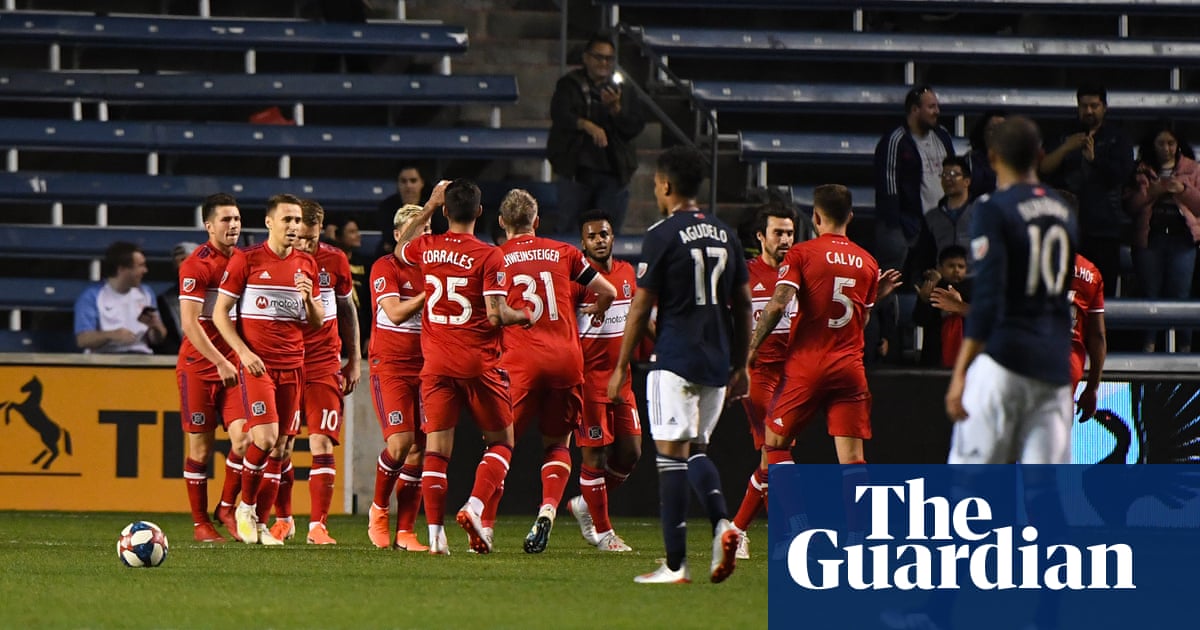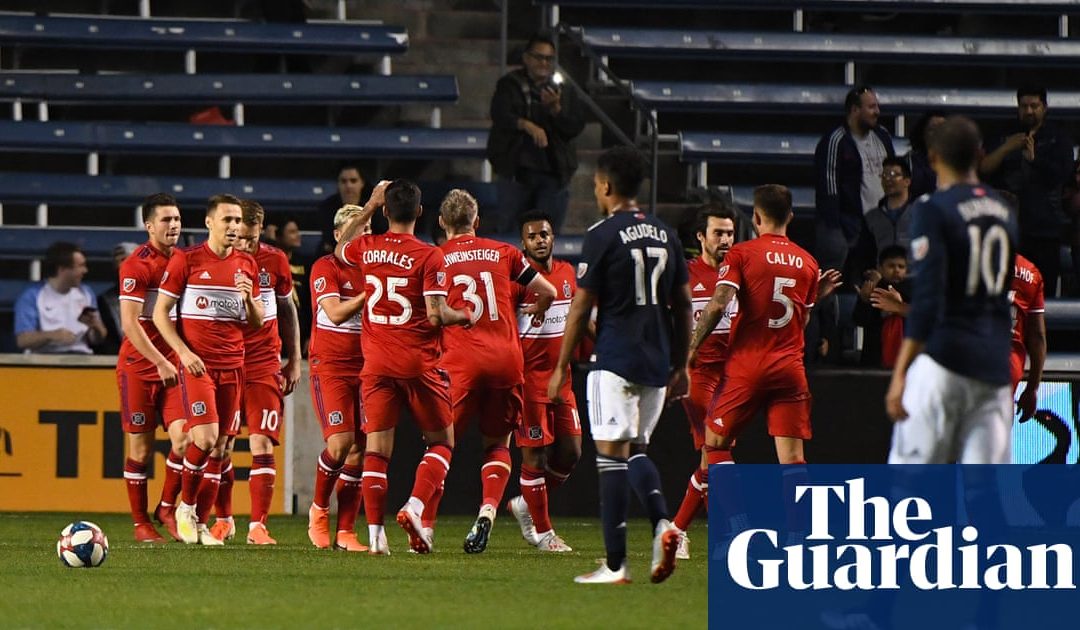Twenty years on from the opening of the first soccer-specific stadium, should the Fires possible move back to an NFL venue prompt MLS to face some home truths?

It was the alliterative mantra designed to put Major League Soccer on the road to prosperity: soccer-specific stadium. Starting with the Columbus Crew in 1999, clubs began to lay the literal foundations for long-term success, sparking a construction spree. Of the 24 teams competing in the 2019 season, 18 play in homes built primarily for soccer.
So at first it sounds jarringly counter-intuitive that the Chicago Fire are seeking to become the first MLS club to quit a soccer-specific venue. They plan to return to Soldier Field, the home of the NFLs Chicago Bears, after only 13 years at SeatGeek Stadium. But its easy to see why a Fire exit appeals, even at a reported price of $60.5m to escape suburban Bridgeview.
When the Fire left Soldier Field in 2005 they had made the playoffs in seven of the past eight seasons and boasted an average crowd of 17,238, the third-best in MLS. Now they own the leagues worst attendance (10,585 on average so far this year), have made three playoff appearances in the past 10 seasons and their brand has been usurped by an identically-named NBC TV show.
MLSs best-attended teams, Atlanta United and the Seattle Sounders, play in NFL venues and draw in excess of 40,000 fans, showing that in the right circumstances, going big from the start can pay off. But other clubs are still house-hunting like its 2005.
Proposed stadiums in Cincinnati, Austin, Nashville, Columbus (again) and Miami (definitely maybe) are in the 20,000 to 30,000 capacity range. Newcomers FC Cincinnati are third in the 2019 attendance league so far, averaging 27,363 fans at a college football stadium. Their planned West End Stadium, though, will seat about 26,000 people.
Minnesota United averaged nearly 24,000 fans last season at the University of Minnesotas college football stadium, attracting 52,242 to an October game against the Los Angeles Galaxy. Yet this year they moved to their very own place, with a capacity under 20,000. Swanky, but too small, as MLS commissioner Don Garber remarked last month.
After preaching the gospel of soccer-specific stadiums since taking the job in 1999, Garber has adopted an increasingly pragmatic approach. New York City FC, after all, are in their fifth season in the New York Yankees famous home but are still one of the best-supported teams in MLS.

The good thing about being new and trying to figure it out as you go along is you have a specific plan and then there are times when you have to modify that plan, Garber told the Orlando Sentinel last year. I think good business leaders and good businesses dont just get stuck in their previous strategies but try to evolve and see how things develop.
The quest for conservatively sized real estate was natural given financial restrictions and the desire to shake the bad memories of MLS infancy: tiny crowds in cavernous football stadiums. The Dallas Burn (now FC Dallas) struggled to draw more than 10,000 fans in the Cotton Bowl (capacity 90,000).
Today, Dallas play in a 20,500-seat venue that opened in 2005 and was recently upgraded to play host to the National Soccer Hall of Fame. But its a good day if the crowd exceeds 15,000 in the countrys fourth-largest metropolitan area.
The Fire moved to their new home in 2006 by employing, like Dallas, a strategy that already seems antiquated: find an ambitious suburban municipality and leverage the appeal of sports into a favourable deal for a new stadium. But a league once associated with suburban families is now chasing young, affluent urbanites. And while many American metropolitan areas are enjoying population booms, transport infrastructure hasnt kept up, making cross-city journeys unappealing.
FC Dallas have doubled down on their awkwardly-located home in Frisco, 27 miles north of downtown Dallas, by completing a renovation project last year. In contrast, the Fire are seeking a way out.
It takes an hour or more by public transport to travel the 15 miles from the Loop to SeatGeek Stadium in Bridgeview. Run by the city of Chicagos parks district, the 61,500-capacity Soldier Field, in contrast, has one of the most enviable locations in American sport, nestled amid lakeside parkland about 1.5 miles from the heart of downtown. And it was full when Real Madrid were the visitors for the 2017 MLS All-Star Game.
The economic benefits of stadiums are often overstated but they offer cultural, reputational and publicity boosts. Civic pride isnt measured on any balance sheets and big cities can usually absorb the costs without too much pain. Bridgeview, though, is a village. It has about 17,000 residents – all of whom could fit inside its stadium, which seats 20,000 for Fire games.
The stadium and surrounding redevelopment plans failed to deliver on expectations. After issuing bonds to build the $98m stadium, the village has a debt burden of about $250m and its credit rating was downgraded to junk level in 2017, while property taxes rose sharply to help cover the costs in a place where the median household income is a modest $54,198.
As reported by the Desplaines Valley News, the Villages board last week approved a memorandum of understanding with the Fire, the terms of which would see the team pay Bridgeview $60.5m ($10m upfront, $50.5m over 15 years) to wriggle out of its lease restrictions, which runs until the end of 2036 and another $5m for the use of training facilities over five years. The Chicago Red Stars of the National Womens Soccer League will remain in Bridgeview.
The Fire, presumably rebranded so that no one confuses Bastian Schweinsteiger with Jesse Spencer could be back in Soldier Field as soon as next season. Were not too far away from an agreement but the first step was this adoption of a memorandum of understanding, Bridgeview spokesman Ray Hanania told the Guardian, adding he was optimistic that the Fires departure would make it easier to use the venue for concerts. We think its in everybodys best interests to do this, he said. A Fire spokesman meanwhile said plans were still being discussed. We have been negotiating with Mayor Landek and the Village of Bridgeview for some time on an amended stadium lease, but we have not reached a final agreement, and until we do, Im not able to comment further.
Even at $60.5m plus the cost of renting Soldier Field, it could prove value for money if the Fire successfully relaunch, improve on the field and expand their fanbase. New MLS arrivals must splash out $150m for an expansion fee in addition to sourcing anywhere from $200m-400m for a new stadium all in order to entice crowds that will be perhaps half the size of Seattle or Atlanta, in a league where player salaries are rising and ticket sales remain a critical revenue source in the absence of Europe-style broadcast mega-deals.
Every situation is unique. But the versatility of modern stadiums, the triumph of Atlantas big-time-from-the-beginning strategy, Seattles ongoing prosperity after a decade of sharing with the Seahawks and the Fires mooted move challenge old assumptions as MLS evolves and the question is no longer about the leagues survival, but its scale.


Recent Comments